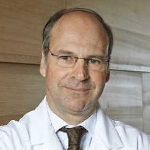Report on the 6th European Particle Therapy Network workshop - PDF Version
The 6th European Particle Therapy Network (EPTN) workshop took place in a virtual setting on 23 October 2020. The workshop was attended by 55 participants.
New centres joining the EPTN
The workshop started with the announcement of the new centres that had opened since the last annual meeting: the Zuid-Oost Nederland Protonen Therapie Centrum (ZON-PTC, the South-East Netherlands Proton Therapy Centre), in Maastricht, The Netherlands; the Particle Therapy Interuniversity Centre Leuven (ParticLE), Belgium; and a new Rutherford Cancer Centre, UK.
Involvement of radiotherapists in the EPTN
The Radiotherapists Committee of the European SocieTy for Radiotherapy and Oncology (ESTRO) had reached out to the EPTN with a request to involve the radiation therapists (RTTs) in the EPTN network. This request was initially presented to the ESTRO Scientific Council where it was approved. A meeting between the EPTN coordinators and key members of the RTT Committee took place in June. At that meeting the areas of interest for RTTs were discussed.
The EPTN network was consulted during the workshop on the involvement of RTTs, and this involvement was approved. RTTs and coordinators of the EPTN working parties (WPs) will discuss how to optimise this collaboration.
Report from European Commission DG Santé / EIB
The sub-group on proton therapy of the European Commission (EC) steering group on health promotion, disease prevention and management of non-communicable diseases, which is co-chaired by the directorate-general on health and food safety (DG SANTE) and the European Investment Bank (EIB), was created in 2018. A first physical meeting of the subgroup took place in Luxembourg approximately two years ago.
The mandate of the sub-group is to examine the current state of play of availability and use of proton therapy centres across the European Union (EU) and to identify options through which willing member states can cooperate sustainably to improve information exchange and avoid duplication of effort.
In this respect, the EC supports the formation of a European network and it is evident that EPTN has a role to play in this arena.
On 21 October, the sub-group on proton therapy met virtually. Representatives of member states’ health authorities, the EPTN, the EIB and the DG SANTE / directorate-general of research and innovation were present. The meeting was attended by approx. 40 participants.
A flash report by the DG SANTE is available here:
https://ec.europa.eu/health/sites/health/files/non_communicable_diseases/docs/ev_20201021_flash_en.pdf
Patterns of practice for adaptive and real-time radiation therapy (POP ART RT)
POP-ART RT was a project that originated from the 2nd ESTRO Physics Workshop, which was held in 2018. A POP-ART RT survey was conducted, and the results of the survey have been published in Radiotherapy & Oncology: https://doi.org/10.1016/j.radonc.2020.06.018.
POP-ART PT is a spin-off project that is intended for the particle therapy community. A survey is being distributed that aims: to determine the status of real-time and adaptive particle therapy; to discover the demand for its implementation; and to understand the barriers to future implementation.
The survey addresses two concerns regarding anatomical changes that occur due to respiration: those that occur intra-fraction and those that occur inter-fraction. The questions that are asked in each part of the survey link to delivery type, sites treated, strategies implemented, and imaging and monitoring tools used.
The survey links to the work of EPTN WPs 4 and 5 but it focuses only on workflow. Twenty responses to the survey have been received to date. The EPTN has been approached regarding distribution of this survey in November 2020.
The analysis and dissemination of results is expected by the end of 2021. In terms of dissemination, the authors intend to submit abstracts for preliminary presentation of the results at 2021/2022 meetings of the Particle Therapy Co-Operative Group (PTCOG) or ESTRO, and to publish the results in two papers, one to address intra-fractional changes and the other inter-fractional changes, in peer-reviewed journals.
The survey can be completed online at https://www.surveymonkey.com/r/FR9KZCG.
WP8 and INfraStructure in Proton International Research (INSPIRE)
WP8 concentrates on selection procedures of patients for proton therapy by addressing different components of the selection, such as: how the patients are selected for proton therapy; what are the indications; patient selection methods and criteria etc.
A questionnaire was created and sent out. Two EPTN centres have responded to date. EPTN network centres are encouraged to fill out the questionnaire.
The questionnaire looks at different criteria for different tumour sites. It is estimated that completion of each part of the survey that considers one site will take approx. 10 minutes.
You can fill in the questionnaire online via the links below:
Involvement of vendors in clinical research
Major vendors in proton therapy have declared their recognition of the importance of generating high-quality data and have stated their willingness to support data collection through research studies. The preoperative chemoradiation (paclitaxel-carboplatin or folfox) for resectable oesophageal and junctional cancer (PROTECT) trial sees the financial involvement of two vendors.
Covid-19 survey
A survey on SARS-CoV-2 protocols for particle therapy was launched at the start of the outbreak in March to address the consequences of the outbreak on workflow, staffing, patient selection etc. and to consider whether fractionation schedules would be altered in proton therapy.
Two rounds of questionnaires were circulated in March and May; 12 centres answered.
It was found that all sites accepted patients from outside their regions; 73% had discontinued follow-up visits in person; 82% had limited access for adult patients; and all sites had limited access for parents / caregivers of paediatric patients.
It was found that 70% of sites had treated asymptomatic SARS-CoV-2-positive cancer patients while 50% of sites had treated symptomatic SARS-CoV-2-positive cancer patients.
Regarding the use of hypofractionated schedules, for both photon therapy and particle therapy, in palliative and curative settings, 100% of the centres responded that they used hypofractionated schedules in treatment with photons in curative settings whereas 80% did in palliative settings. In particle therapy, the percentages were respectively 60% and 30%. Hypofractionated schedules were mainly used in prostate and breast cancer. For gastrointestinal neuro-oncology, the schedules mainly stayed the same, but e.g. for glioblastoma it was noted that centres changed indication and focus from glioblastoma to grade 2/3 glioma.
The next rounds of the survey are taking place in November 2020 and planned for early 2021 with the aim of publishing a white paper on the findings shortly thereafter.
Moreover, a new survey on the effect of delay in patient referrals and on the multidisciplinary approach that has been applied during the pandemic is planned to be launched in 2021.
Here you can read about our progress across our seven working parties.
Damien Weber, Cai Grau & Dietmar Georg
Co-chairs, EPTN task force

Damien Weber

Cai Grau

Dietmar Georg